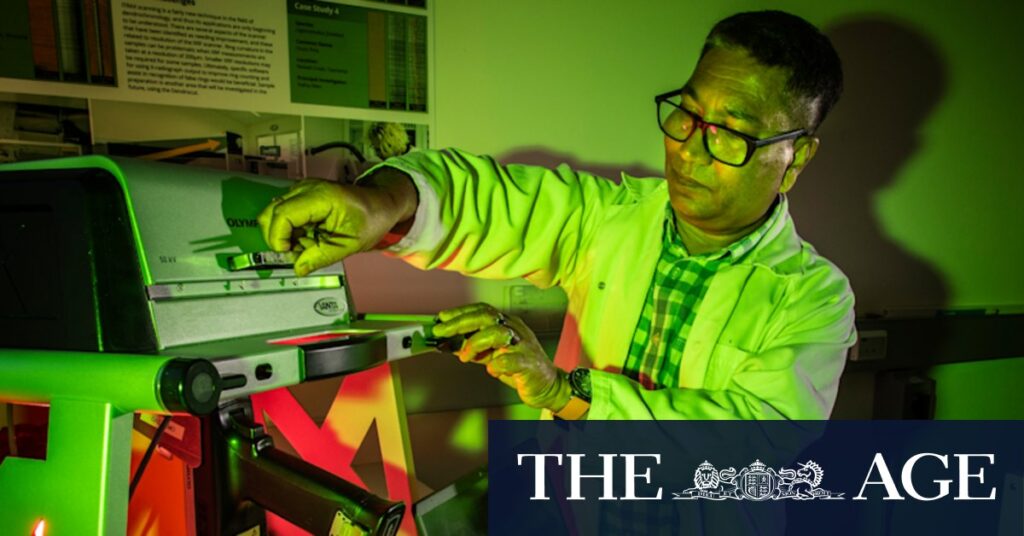
If you’re a lover of seafood, there’s a disturbingly high chance you’ve unknowingly consumed critically endangered shark meat or arranged a Christmas platter with “Aussie caught” prawns and fish that actually originated from an Asian trawler. A 2023 DNA analysis found that more than one in ten seafood products were mislabelled, revealing that endangered hammerhead shark flesh was being battered and sold as fish-and-chip shop flake. Fillets of spotback skate, a native ray species at risk of extinction, were also found on supermarket shelves.
This so-called “fish fraud” is part of the reason a team of nuclear scientists has worked for almost a decade on a handheld detector that resembles a radar gun, capable of detecting the origin of a food product in minutes. Dr. Debashish Mazumder, leader of food provenance research at the Australian Nuclear Science and Technology Organisation (ANSTO), emphasized the importance of this innovation. “If you look at the food safety angle, if we do not know a food’s source of origin, it may be contaminated with something. There are biosecurity issues also there,” he said. “It’s not only affecting the industry, it’s affecting society, the environment as a whole.”
Origins of the Food Fraud Battle
Mazumder’s interest in food fraud was piqued nearly a decade ago when he purchased two types of chicken meat—free-range and corn-fed—from a major supermarket for an experiment. The two products should have had different “isotopic signatures,” which reflect the precise ratio of elements in a creature’s tissue based on its diet and habitat. However, Mazumder’s analysis revealed that the two chicken meats were suspiciously similar. “It alarmed us. It showed the chicken was not really corn-fed chicken. We thought: how big is this issue?” Mazumder recounted.
This realization led Mazumder and his team to repurpose a handheld scanner, typically used for sediment analysis, to trace food products to their origin. The concept relies on the unique elemental make-up of animals and plants, which is specific to their living environment.
Technological Innovation: XRF Scanning
The device employs X-ray fluorescence (XRF) scanning technology to send three beams through a fish sample, revealing the exact elemental composition of its body. Mazumder and his team have collaborated with fisheries and researchers across Australia and Southeast Asia to build a database of these “elemental signatures” matched to specific locations. This means the device can scan a fillet and determine its origin, as well as whether the fish was farmed or wild-caught, with over 80 percent accuracy.
In a demonstration, the ANSTO team analyzed two nearly identical bream; one from the Clarence River in Yamba, the other from the Hunter River near Newcastle. While DNA analysis would identify them as the same species, the XRF analysis revealed differences in calcium, phosphorus, and chlorine levels. The Yamba bream contained traces of rare-earth metal neodymium, which the Newcastle fish lacked.
“The device can scan a fillet and determine where it came from, and whether the fish was farmed or wild-caught, with over 80 percent accuracy.”
Impact on the Seafood Industry
Early trials of the scanning technique have already exposed “Australian” tiger prawns on sale for Christmas at a Sydney fishmonger that were actually from Malaysia. The device has also uncovered fraudulent sales of Kakadu plum, undermining authentic Aboriginal producers of the sought-after fruit in the Northern Territory and Western Australia. Almost 90 percent of overseas products sold as Kakadu plum were found to be bogus. In one instance, a product sold online as authentic Kakadu plum powder was revealed to be corn flour.
The US Food & Drug Administration estimates that food fraud costs the global economy as much as $40 billion a year. The ANSTO team has focused their early efforts on seafood because it’s an industry rife with mislabelling and a long, complex supply chain. With global fish stocks declining, knowing the true origin of seafood products is critical for sustainability.
Looking Ahead: Broader Implications
The implications of this technological breakthrough extend beyond just seafood. As the database of elemental signatures expands, the potential to apply this technology to other food products grows, offering a powerful tool in the fight against food fraud. The innovation not only promises to protect consumers but also supports ethical producers and contributes to environmental sustainability by ensuring that endangered species are not exploited under false pretenses.
As the world grapples with the challenges of food security and sustainability, the development of this handheld scanner represents a significant step forward. By providing a reliable means to verify the origins of food products, it offers a new level of transparency and accountability in the global food supply chain.






